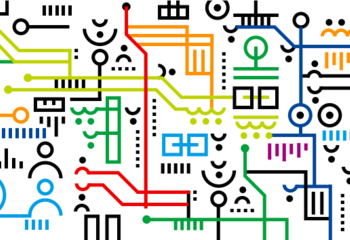Literature included below. Summaries of previous reading group editions included here.
edition March 2024
white paper Regenerative business models by Linda Drupsteen, Ingrid Wakkee and Iteke van Hille
Introduction by Linda Drupsteen
In this edition we build on our previous discussion on Konietzko et al.'s paper (see summary) and explore how colleagues at HvA Center for Economic Transformation are drawing on this work in their own programming and proposals in development. A good example of how we operationalize and extend current literature to address our work. We will share the white paper with reading group participants. As a background, you may find it interesting to peruse the World Economic Forum white paper (see also this post) and/or revisit the Konietzko et al. paper. This should provide a solid basis for an interesting discussion!
edition December 2023
Innovation ecosystems for the circular transition.
Introduction by Melanie de Vries & Rob Lubberink
Talmar et al. (2020) Mapping, analyzing and designing innovation ecosystems: The Ecosystem Pie Model. Long Range Planning, 53(4) link https://www.sciencedirect.com/science/article/pii/S0024630118304667#bib23
In this edition Melanie and Rob will introduce the concept of innovation ecosystems, supported by this paper by Talmar et al. The ecosystem pie model is fairly well-known and applied a lot, also in teaching, so we will discuss to what extent this model is applicable for the circular economy.
Abstract To achieve a complex value proposition, innovating firms often need to rely on other actors in their innovation ecosystem. This raises many new challenges for the managers of these firms. However, there is not yet a comprehensive approach that would support managers in the process of analysis and decision making on ecosystem strategy. In this paper, we develop a strategy tool to map, analyze and design (i.e., model) innovation ecosystems. From the scholarly literature, we distill the constructs and relationships that capture how actors in an ecosystem interact in creating and capturing value. We embed these elements in a visual strategy tool coined the Ecosystem Pie Model (EPM) that is accompanied by extensive application guidelines. We then illustrate how the EPM can be used, and conclude by exploring the multiple affordances of the EPM tool as a boundary object between research and practice.
edition September 2023
Regenerative business models
Introduction by Yanti Slaats
Konietzko, J., Das, A., Bocken, N. 2023. Towards regenerative business models: A necessary shift?
Sustainable Production and Consumption, 38: 372-388. link https://www.sciencedirect.com/science/article/pii/S2352550923000866
Abstract This study aims to provide an initial framework for regenerative business models and differentiate them from sustainable or circular models. Regenerative business models share some design approaches with sustainable and circular models but differ in their main goals and systemic perspectives. Achieving regenerative business models requires strong and contested policy frameworks, including animal and nature rights and true pricing. Further research is needed to explore how organizations can incorporate intrinsic notions of value beyond capital and avoid new forms of greenwashing when adopting regeneration and net positive impact narratives.
Inclusion / just transition
Kirchherr (2021). Toward circular justice: A proposition. Resources, Conservation & Recycling, 173(105712). link An essay introducing the concept of 'circular justice.
Souza Piao, R., Braga de Vincenzi, T. Fernandes da Silva, A.L., Chinen de Oliveira, M.C. , Vazquez-Brust, D., Monteiro Carvalho, M. How is the circular economy embracing social inclusion?
Journal of Cleaner Production 411(137340). link
The literature exploring CE and social impacts is still in its early stages, but it is unfolding and there is a need for desk research to review and map the state of the art in terms of how social inclusion is being addressed by research in the social dimension of CE. The guiding research question was: How is circular economy embracing social inclusion?"
edition June 2023
Circular business models
Introduction by Marco van Hees
Geissdoerfer, M., Morioka, S. N., de Carvalho, M. M., & Evans, S. (2018). Business models and supply chains for the circular economy. Journal of Cleaner Production, 190, 712-721. link
Kirchherr, J., Reike, D., & Hekkert, M. (2017). Conceptualizing the circular economy: An analysis of 114 definitions. Resources, Conservation and Recycling, 127, 221-232. link
Kirchherr, J., Piscicelli, L., Bour, R., Kostense-Smit, E., Muller, J., Huibrechtse-Truijens, A., & Hekkert, M. (2018). Barriers to the circular economy: Evidence from the European Union (EU). Ecological Economics, 150, 264-272. link
edition February 2023
Principles for a circular economy
Introduction by Willem van Winden
Velenturf, A. P., & Purnell, P. (2021). Principles for a sustainable circular economy. Sustainable Production and Consumption, 27, 1437-1457. link
